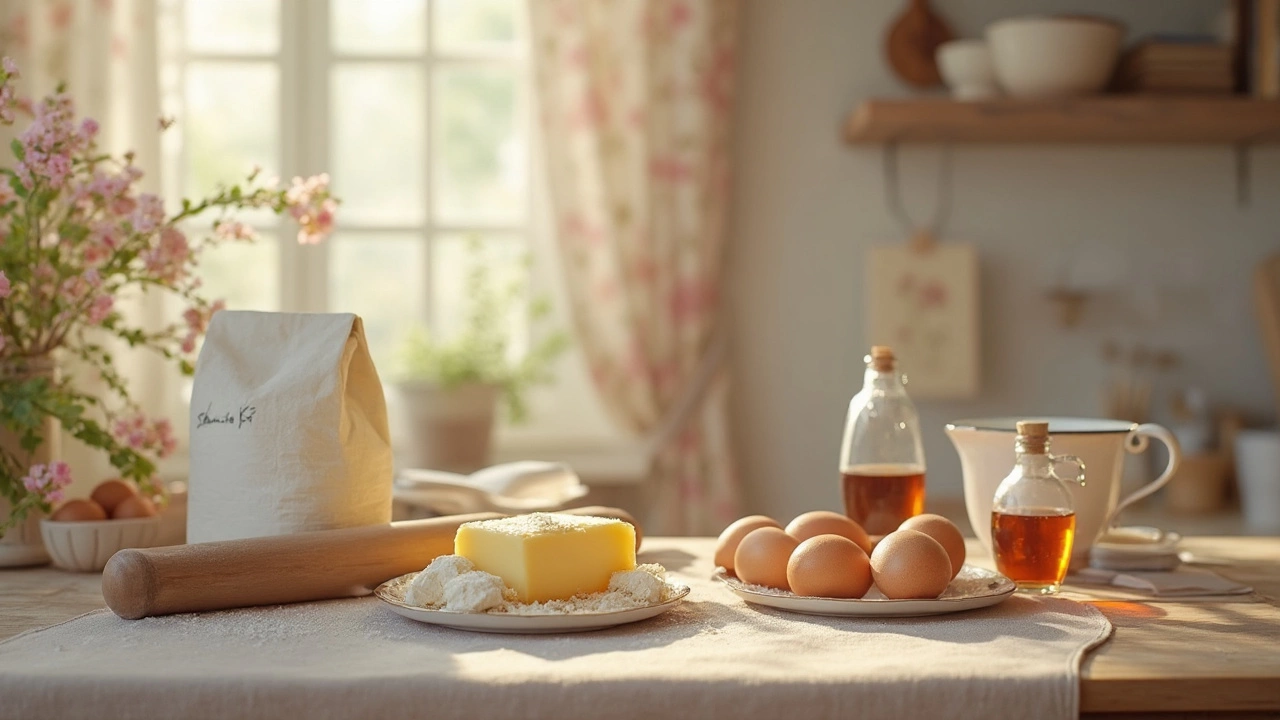
Ever found yourself longing for that perfect homemade cookie, the kind that melts in your mouth and makes the whole kitchen smell like a sweet dream? Knowing the basic ingredients and how they work their magic is the secret puzzle piece. Let's dig into the seven essential ingredients you'll need and uncover their delicious mysteries.
First up is flour. It's pretty much the backbone of any cookie, giving it structure. Whether you're going for chewy or crispy, the type of flour and how you handle it makes a world of difference. Don't just grab any bag; consider if you want to blend different flours to change the texture.
Next, sugar isn't just about sweetness. It's the secret behind that beautiful brown color and even affects the feel of the cookie. White sugar will give it a crunch, while brown sugar adds moisture for that soft bite. So, depending on your sweet tooth, tweaking your sugar combo can lead to cookie greatness.
- Flour: The Foundation
- Sugar: Sweetness and Texture
- Fat: Butter vs. Alternatives
- Eggs: Binding and Moisture
- Leavening Agents: Rise and Shine
- Salt: Balancing Flavor
- Vanilla: The Flavor Enhancer
Flour: The Foundation
Flour is where it all begins when you're talking homemade cookies. It's the backbone, the main structure that holds everything together. The type of flour you choose and how you use it can make a huge difference in the final product.
Most cookie recipes call for all-purpose flour. Why? Because it's got the right balance of proteins and starches to give your cookies structure without making them too dense or too crumbly. But hey, there's more to explore!
- Whole wheat flour: Swap a bit of this in for a nuttier flavor and a slightly denser texture.
- Bread flour: Want a chewier cookie? This flour has more protein and can give you that desirable chewy texture.
- Pastry flour: For a more tender and crumbly cookie, this flour can do the trick.
Remember the role of measuring here. Scooping straight from the bag might compact the flour, giving you more than what the recipe calls for, and that can lead to drier cookies. Use a spoon to fluff it into your measuring cup and then level it off with a knife. A small thing, but it matters!
And ever wonder why your grandma always told you not to overmix the dough? It’s because too much stirring can develop the gluten in the flour, leading to tough cookies instead of tender ones.
Here’s a fun fact to chew on: Different flours can actually change the protein content in your cookies. Check out this handy comparison:
| Flour Type | Protein Content (%) |
|---|---|
| All-Purpose | 10-12% |
| Bread | 12-14% |
| Pastry | 8-9% |
So whether you're sticking with the classic all-purpose flour or feeling adventurous, remember that flour is truly the foundation of cookie baking!
Sugar: Sweetness and Texture
Sugar is the sweet heart of a cookie, but its charisma goes way beyond just taste. It plays a crucial role in determining the texture of your homemade cookies. Let's break it down a bit.
First off, there's granulated sugar, which is all about that classic sweet punch. It's what gives your cookies a crisp edge, perfect if you're all about that satisfying snap when you take a bite. But wait, there's more! Granulated sugar helps cookies spread out during baking, giving them that lovely, even shape.
On the flip side, brown sugar is where things get interesting. It's basically white sugar with a molasses hug, providing a rich, deep flavor. When you use more brown sugar, your cookies turn out moist and chewy, thanks to the extra moisture from the molasses. It's also behind that slight caramel flavor that makes you want to grab for another one.
In a lot of baking adventures, a blend of both sugars is actually the secret sauce. You're not just mixing ingredients—you're deciding how you want your cookies to turn out in terms of texture and taste. Want them more crisp? Lean towards white sugar. Prefer a chewy bite? Let brown sugar take the lead.
If you're watching your sugar intake but still crave that cookie goodness, you might consider sugar substitutes like coconut sugar or maple syrup. Remember, though, they can change both flavor and texture, so it's a bit of a balancing act. Play around until you find your sweet spot!
To sum it up, sugar isn't just a one-trick pony in cookie baking. It's all about understanding what each type brings to the table and how they shape the final product. Experimenting with different ratios can transform an ordinary cookie into something extraordinary!
Fat: Butter vs. Alternatives
Alright, let’s talk about the fat in our beloved cookies, specifically the buttery goodness that takes them to the next level. If you’ve ever wondered why some cookies are irresistibly crisp while others stay deliciously soft, it’s largely because of the type of fat used.
Butter is the classic choice. It makes cookies taste rich and gives them that melt-in-your-mouth vibe. When you bake with butter, its water content helps them spread out, which often results in a thinner and crispier cookie. But not every situation is suited for butter—sometimes you've got to switch it up!
Alternatives like margarine, shortening, or even coconut oil can change everything. Margarine keeps cookies soft but might lack in the flavor department compared to butter. Shortening, on the other hand, is all about giving you a fluffy texture because it helps the cookies rise and hold shape. Coconut oil? It’s a great plant-based option that can add a unique taste, especially if you’re baking tropical-flavored cookies.
- Baking Tip #1: For cookies that stay soft even days after baking, try a mix of butter and shortening.
- Baking Tip #2: Want that buttery flavor without the spread? Refrigerate your dough before baking.
- Baking Tip #3: Experiment with coconut oil in small quantities at first, as it can be overpowering for some delicate flavors.
If you're keeping an eye on health or dietary preferences, remember that these fat alternatives can have varying nutritional values. For instance, while coconut oil is high in saturated fat, it’s lauded for being a less processed option.
| Type of Fat | Flavor | Texture |
|---|---|---|
| Butter | Rich, Creamy | Spread, Crisp |
| Margarine | Mild | Soft |
| Shortening | Neutral | Fluffy |
| Coconut Oil | Nutty, Sweet | Soft, Dense |
So, next time you’re putting together your cookie ingredients, give a thought to what kind of texture and flavor you’re aiming for. Mixing and matching different fats can lead to surprising new favorites.
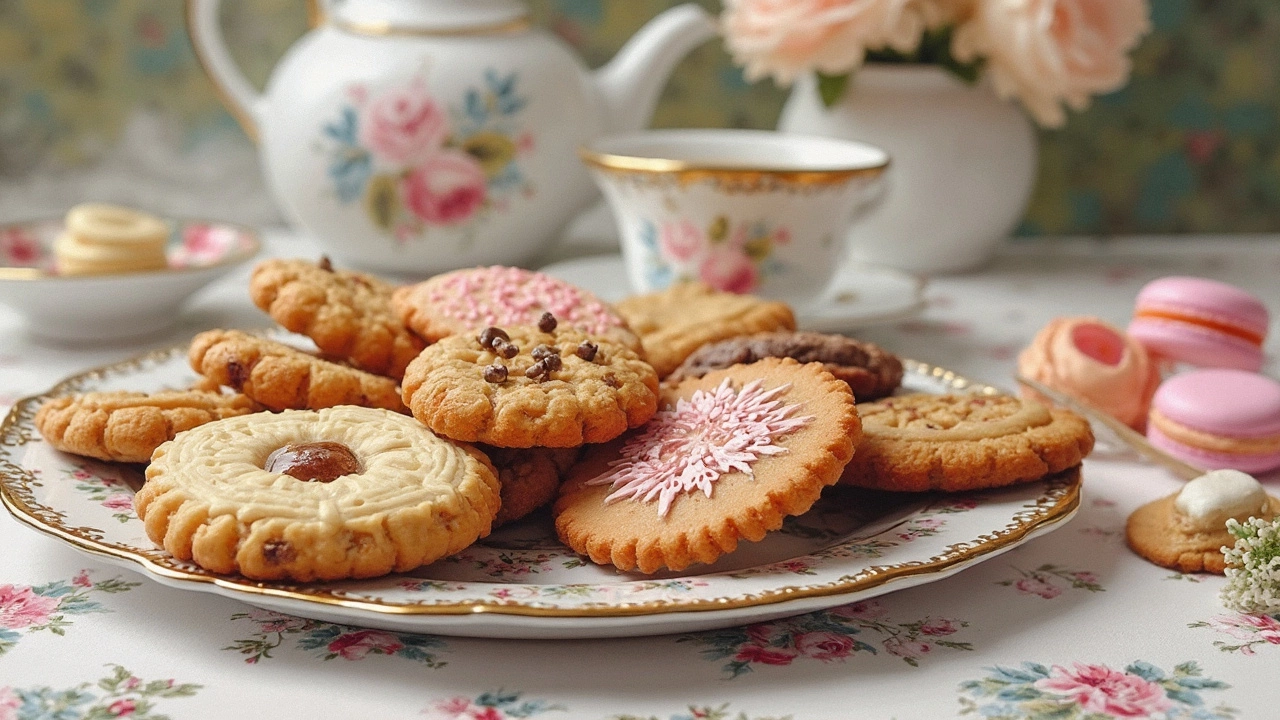
Eggs: Binding and Moisture
Alright, let's chat about eggs. In the wild world of homemade cookies, eggs play a dual role that's super important for getting that perfect batch. Think of them as the glue and the hydration crew. Eggs help hold everything together while keeping things moist and yummy—none of that crumbly stuff here!
At the core, eggs are there to bind the ingredients together. Picture the eggs wrapping around the cookie ingredients, creating a smooth blend so each bite stays intact. That's why if you skip the eggs or nix them altogether, you might end up with a pile of cookie dust.
Moisture is another key ingredient eggs bring to the table. They make sure your cookies stay nice and soft, especially if you're after that chewiness that feels like a warm hug. Ever wonder why some recipes call for an extra yolk or white? It's all about adjusting that moisture level. More yolk means more richness, while an extra white can make things a bit thinner and crispier.
For vegans or those with allergies, don't fret! You can swap eggs with alternatives like unsweetened applesauce or mashed bananas. Here's a quick stat: 1/4 cup of unsweetened applesauce can replace one egg and it'll keep those cookies just as moist.
- 1 large egg equals about 3 1/4 tablespoons when measured out. If you need to make adjustments, now you know!
- If a recipe calls for 2 eggs, and you want more fluffiness, try using 3 egg whites instead.
Playing around with eggs can lead you down different cookie paths, from cakey heights to fudgy depths. So, next time you're whipping up a batch, remember the power of the egg and what a slight change can do!
Leavening Agents: Rise and Shine
Alright, let's talk about leavening agents—those unsung heroes that make your cookies puff up like little clouds. The big players here are baking soda and baking powder, and understanding their differences can change your cookie game forever.
Baking soda, or sodium bicarbonate if you want to get all science-y, is a basic ingredient that reacts when it meets an acid. So, if you've got something like brown sugar or chocolate in your cookie ingredients, baking soda helps activate the rise. But don't just toss in a truckload. Too much and you're in bitter territory.
On the other hand, baking powder already includes the acid part, so it's more of a complete package. You can count on it for a little rise even when there's no acidic buddy hanging around. Pro tip: If a recipe only calls for one but you want to add the other, just remember each needs a friend to react with.
"For the best cookie texture, a balance of both baking soda and baking powder might be your best bet," says Alice Medrich, baking expert and author of several revered cookbooks.
Here's a quick way to remember how they work:
- Baking Soda - Needs acid to react, great for spreading.
- Baking Powder - Self-sufficient with acid, good for lift.
When tweaking your homemade cookie recipes, keep in mind these agents are all about timing. Bake them too long, and you'll lose that lovely rise. So, keep a close eye on the oven, and happy baking!
Salt: Balancing Flavor
When we think of cookies, salt might not be the first ingredient that pops into your head. But trust me, this small yet mighty ingredient has a big role in balancing the sweetness of sugars. It can dial down the overpowering sugary taste and bring out other flavors, resulting in a more rounded cookie experience.
Have you ever noticed how a pinch of salt can make a chocolate chip dance on your taste buds? That’s the effect we're going for with cookies. It works as a magic trick, heightening the flavors and making every bite more complex and interesting. So, don't skip it even if it seems like a minor addition!
But here’s the catch: more is not always better. You’ve got to be careful with how much you add. A quarter teaspoon per batch is usually enough. If you're experimenting with new recipes or doubling them, make sure to adjust accordingly.
And hey, if you’re feeling a bit adventurous, you might want to sprinkle some flaky sea salt on top of your cookies just before baking. This not only gives a fancy look but enhances the taste. Next time you're baking homemade cookies, remember that even the tiniest dash of salt can make all the difference!
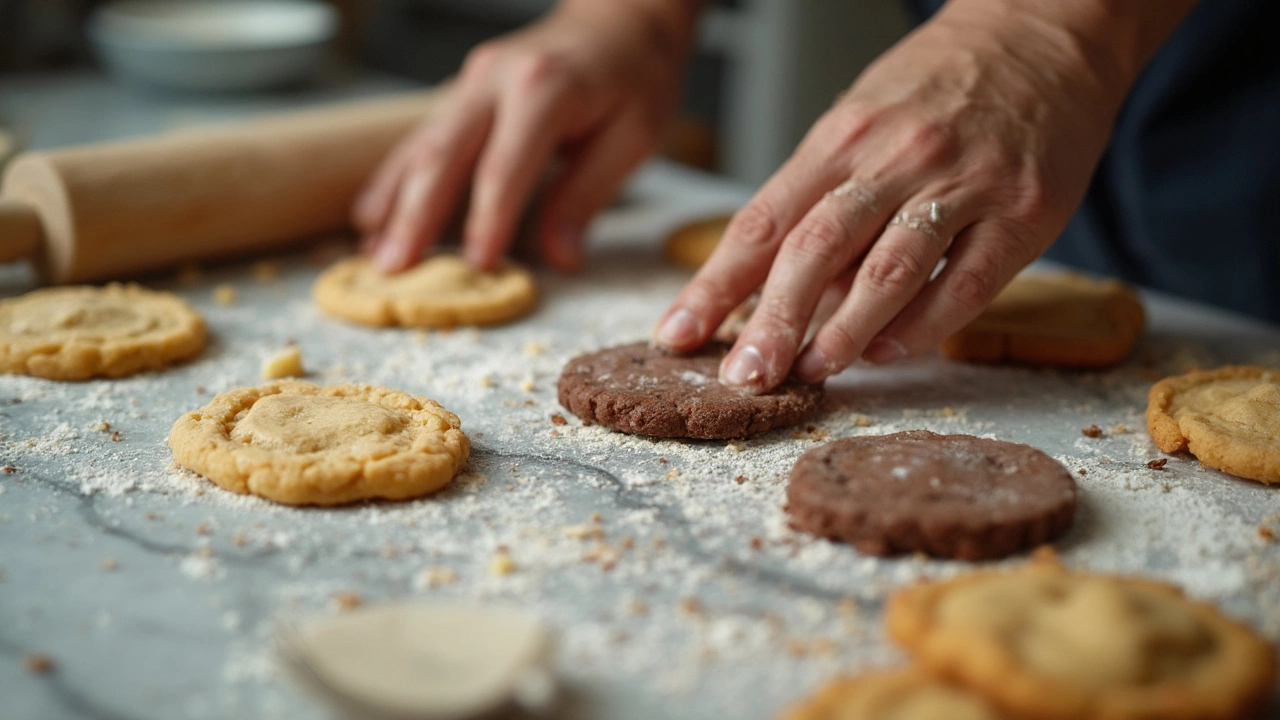
Vanilla: The Flavor Enhancer
Vanilla might seem like a tiny addition, but boy, does it make a difference! It’s like that special ingredient you can’t quite name but would totally miss if it wasn't there. The main job of vanilla in cookies is to bring out the other flavors. Think of it as a spotlight on your cookie’s stage, highlighting the deliciousness of each bite.
Let's talk about quality here—there’s a big difference between pure vanilla extract and vanilla imitation. While imitation is cheaper, pure vanilla extract has a richer, deeper flavor profile. If you can, always go for pure vanilla. It’s made from real vanilla beans, unlike the synthetic version.
Did you know that depending on how much vanilla you use, it can change the flavor profile from subtle to full-on vanilla bomb? Most recipes ask for about a teaspoon, but feel free to up the ante if you're a big fan of that warm, creamy flavor. Just watch out not to overpower the other elements.
Here’s a quick tip: If you’re feeling adventurous, try vanilla bean paste or even whole vanilla beans. They give you those signature little flecks and pack a stronger punch than extracts.
- For more intense flavor, replace 1 teaspoon of extract with 1 tablespoon of vanilla bean paste.
- Split a whole vanilla bean down the middle, scrape out the seeds, and mix them directly into your dough.
Vanilla doesn’t stop with flavor enhancing. It’s a nifty trick to neutralize some unwanted odors in your kitchen, too. Funny, right? While you’re baking with vanilla for your homemade cookies, the pleasant aroma can actually make other smells fade away.
In short, don’t underestimate this ingredient. Whether you're playing with extracts or getting fancy with beans, vanilla adds that quintessential, can't-live-without flavor to your cookie ingredients list.


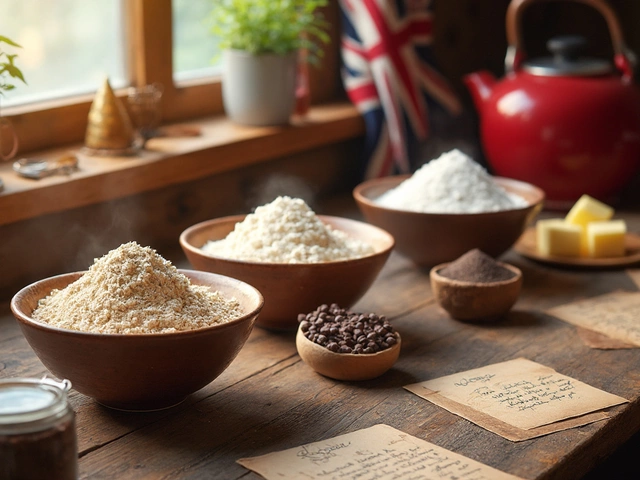




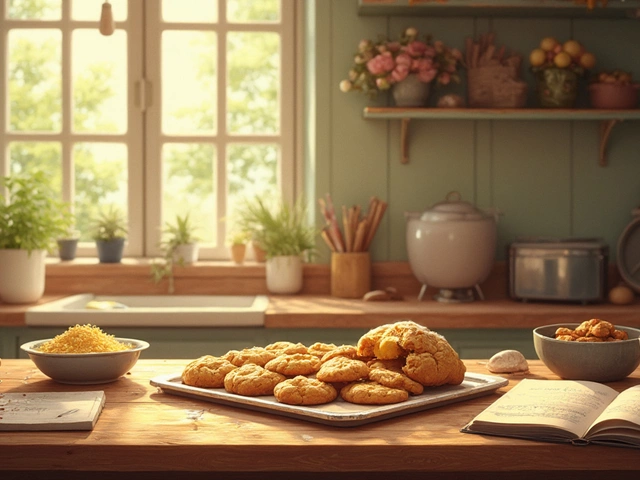

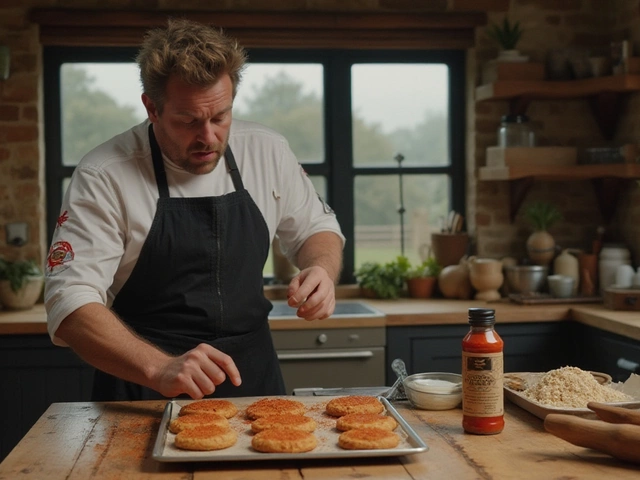

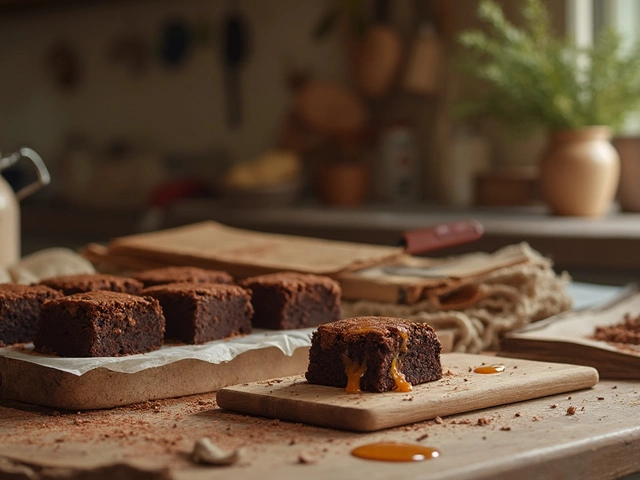
Write a comment